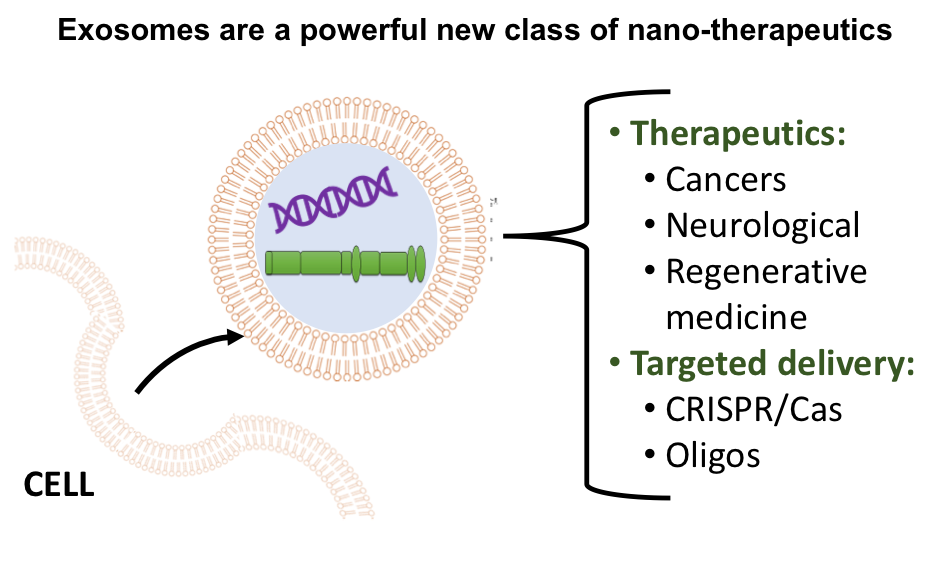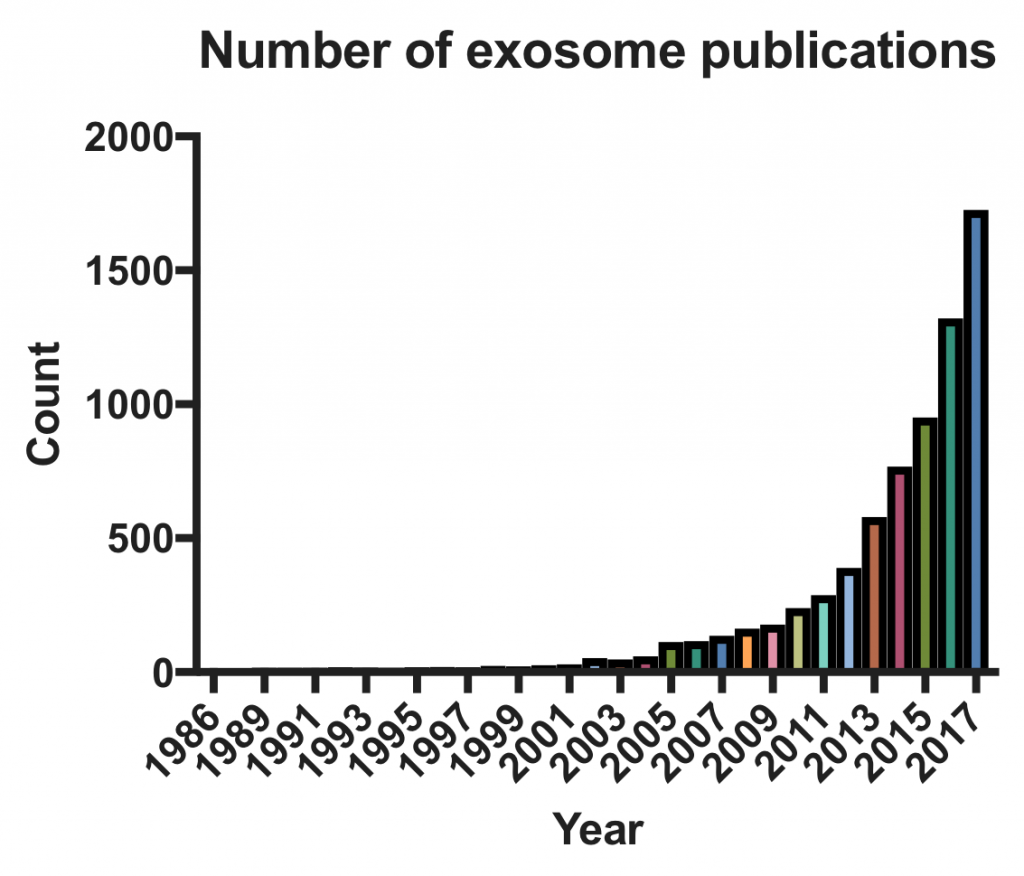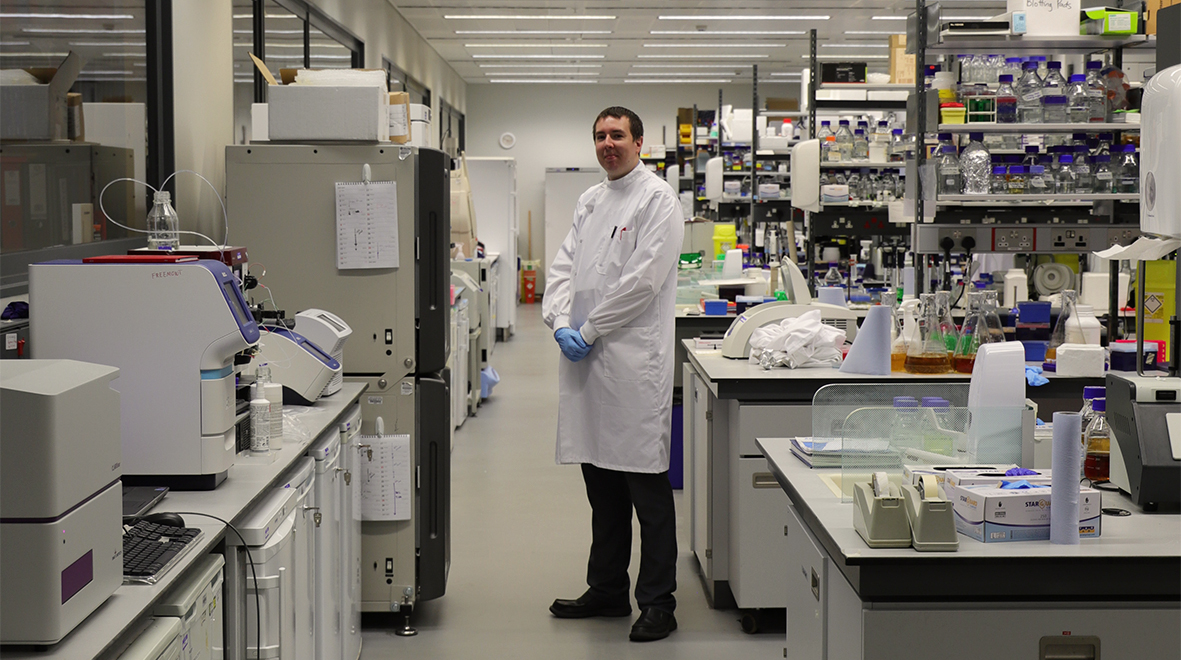
In this post, Dr Richard Kelwick explores exosomes – the tiny vesicles that may hold great therapeutic potential.
The adult human body is composed of around 30 trillion cells! That’s a lot of cells, and researchers are still figuring out the remarkable processes that govern how our cells are exquisitely organised into the complex tissues, organs and systems that make up our bodies. In order for our cells to co-ordinate and organise themselves correctly they need to be able to communicate with each other at the molecular level. Cells can communicate with each other using a variety of different ways, either by physically tugging on neighbouring cells, or by secreting proteins, hormones and many other types of signalling molecules. Cells can also send exosomes to each other.
What are exosomes?
Around thirty years ago researchers first began to notice that many different types of cells seem to be packaging their cellular components within tiny vesicles. They were long ignored and thought to be only useful for ejecting cellular waste. These mysterious vesicles are known as exosomes. Basically, exosomes are a type of tiny vesicle (~30-100 nm in size, roughly 1000th of a hair width), that cells produce within their multi-vesicular bodies, and then release into their environment. Exosome vesicles encase complex molecular cargoes – such as proteins, small molecules, DNA and RNAs – and then deliver them to other cells. Exosomes can travel quite far and sometimes deliver their molecular cargoes to cells in distant parts of the body. Indeed, exosomes are ubiquitous, and can be found in all body fluids including: blood, saliva and breast milk.


Exosomes have attracted quite a bit of attention recently due to the growing evidence that these tiny messages (exosomes) help to regulate several key physiological processes that keep our bodies healthy. Several clinical studies have also shown that certain types of exosomes can potentially be used as therapeutics for treating a number of different diseases – including cancers. Engineered exosomes may also become a standard route for administering gene editing technologies (e.g. CRISPR-Cas9) into patients. These exciting developments in exosome research are inspiring a growing interest in the field.
Capturing exosomes is challenging
Researchers, including myself, want to capture these tiny cellular messages and understand them in greater detail. Unfortunately, capturing exosomes is incredibly challenging; they are tiny, especially in comparison to cells, and isolating them is an ongoing technical challenge. Because of this, a core focus of my research is to develop novel biotechnologies for capturing exosomes. Compounding these challenges is the growing realisation that cells talk a lot and they say a lot of different things. In other words, cells produce many different types of exosomes and it is possible that only certain kinds of exosomes have the potential to be useful therapeutics.
Despite these challenges, progress in exosome research is being made and based on current trends I’m confident that exosome therapeutics will make a positive impact in medicine. Indeed, there is already a growing number of pharmaceutical companies that are learning how to manufacture exosome therapeutics at scale.
Accelerating exosome research
I’ve always had an entrepreneurial strand to my career and so I naturally gravitated towards Imperial’s Techcelerate programme – an entrepreneurial programme for postdoctoral researchers which ran from Jan-March 2018. This gave me the opportunity to explore the commercial potential of my exosome research and network with internationally-leading exosome experts from these therapeutic exosome companies. I was fortunate that our group leader, Professor Paul Freemont, was fully supportive since it allowed me to make the most of Techcelerate. Likewise, the Techcelerate team and supporters that make Techcelerate possible, gave me invaluable advice.
The Techcelerate programme was career-changing for me, and it gave me the opportunity to travel and meet personally, with 89 exosome experts, across the UK, USA, Japan and Singapore. The insights we shared during these meetings has helped me to focus our future research and has already led to a successful Confidence in Concept grant award and an RSE Enterprise Fellowship (due to start Oct 2018). I look forward to continuing my exosome research and I now have a strong foundation from which to explore potential translational opportunities for our exosome capture technologies.

Dr Richard Kelwick (@rkelwick) is a research associate (soon to be an RSE Enterprise Fellow) in Professor Paul Freemont’s group in the Section of Structural Biology. His research is focused on developing novel biotechnologies for capturing and studying exosomes.
Find out more about Richard’s experiences of translating his research into the commercial world over on the Department of Medicine Staff Blog.
Following the launch of the Faculty of Medicine’s reorganised academic structure on 1 August 2019, this post was recategorised to Department of Infectious Disease.